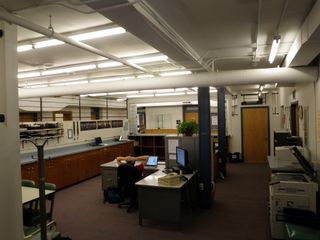Carnegie Hall
Carnegie Hall
Originally submitted by Daniel Hohenstein, Drake University, December, 2010
Carnegie Hall at Drake
President Bell went in search of Mr. Andrew Carnegie in New York. When he arrived he noticed that Mr. Carnegie had gone south for a while. President Bell left talked with the secretary about having Mr. Carnegie donate money to their library. When President Bell returned he prepared an application for a donation and sent it in. Soon enough President Bell received a letter from Mr. Carnegie stating that he would be happy to donate $50,000 for the erection of a library building for Drake University, but he would only give it if a similar amount was raised as a reserve fund. The town of Des Moines and friends of Drake did not want to let this gift go to waste, so they quickly collected to reserve fund and were off to building a new library.
Carnegie Library was one of 108 libraries funded by the Carnegie Foundation of New York; each building was established between 1892 and 1917. One hundred and one libraries donated were public libraries. Only seven libraries were donated to educational institutions, Drake amongst them.
Organization of Hall
President Bell designed Carnegie to originally have classrooms in the basement. The main floor was strictly reserved for the College of Liberal Arts. The third floor was designated for library usage. Around 1938, Cowles library was erected and the majority of the library was moved from Carnegie to Cowles. Dr. Morehouse established that the main portion of Carnegie Hall would be used for both the Liberal Arts College and the Law library. The main floor is used as office of student financial planning. The basement is currently being used for the campus’s technical support and the top floor still home for certain Liberal Arts classes. Although it is not as active as it once was, the building still plays a major role within the University. In fact, Carnegie is recognized today in the National Register of Historic Places.
Cowles Library
After Cowles Library was established in 1938, Carnegie Library became the law library and center for Drake’s Law School. The Cowles building took over the title of “campus library” due to a change in legality. The new regulation passed insisted that a certifiable library could only exist with certain requirements, which Carnegie did not possess. Although Carnegie was architecturally sound, the university was forced to comply and change locations of the library to a more spacious extension.
Bibliography
- "Carnegie Library." Drake Times Delphic 1905: 1-8. Microfilm.
- "History of the Building." Cowles Library. Web. 17 Sept. 2010. <http://library.drake.edu/pages/history-cowles-library-building>.
- "History and Character of Drake University." Drake University Undergraduate 2006-07 Catalog (2006): 4. Web.
- "List of Carnegie Libraries in Iowa." Wikipedia, the Free Encyclopedia. Web. 17 Sept. 2010. <http://en.wikipedia.org /wiki/List_of_Carnegie_libraries_in_Iowa>
- Sulzbach, Deborah E., and Mary Ann Nelson. "Iowa Law Libraries." Vol. Appendix B. 497. Print.



